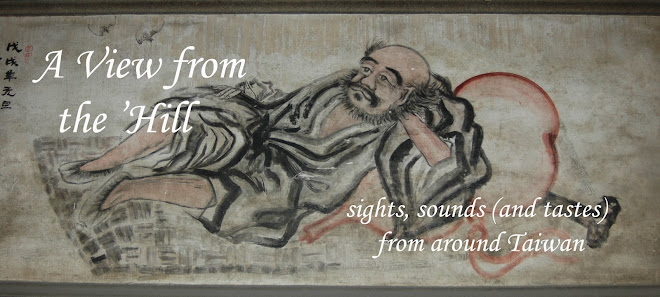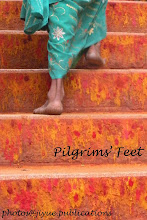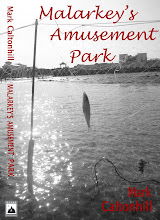A child scans her bracelet in front of a sensor and a "flower" appears. It moves quickly onto a large screen, and is "planted" in a virtual "garden" with hundreds of others. Thus ends her visit to the Pavilion of Dreams, to the most popular exhibit at the Taipei International Flora Expo.

Set to use several million real plants (and countless such virtual ones) over its six-month run, the expo introduces visitors to the science, economics and aesthetics of various things botanical. Jointly sponsored by Taipei City and Taiwan's central government, it uses 91.8 hectares of public facilities - including the Dajia Riverside Park, the Children's Recreation Center, the Taipei Fine Arts Museum (the city's top cultural body), the long-disused Zhongshan Soccer Stadium, and historic buildings such as the Lin An-tai Historical Residence.
Expected to draw nearly 8 million people, the expo is the biggest event ever organized by Taiwan, with a population of just 23 million.
Most visitors enter at the western Yuanshan Park, and first pass the Floral Rainbow in the outside grandstand of the transformed soccer stadium. Inside, there would be held a series of six one-month-long competitions between nations, counties and private companies. Across the road in the Fine Arts Park, 22 countries will keep their exhibitions on for the entire six months in the Global Garden Area.
"This is one of my favorite parts of the Expo," the man in charge, General Producer Ting His-yung, told the Global Times. "In a small space I can see the designs of different cultures and understand the different ways in which different people think."
Another favorite exhibit is located on the stairway between the first and second floors in the Pavilion of Future in the expo's third area, the Xinsheng Park. This starts with flora from the shores of the Penghu Islands, and leads visitors through the vegetation common at increasing altitudes, until one reaches Taiwan's highest mountain, Yushan, standing 3952 meters above sea level and sparsely covered with alpine plants.
Ting also spoke of Taiwan's changing climate during the expo's half-year run, when temperatures will rise from -15 C to around 25. Combined with Taiwan's humidity and spring rains, such weather conditions are good for growing a wide variety of plants, he said.
Opportunities to take boats in Taiwan are surprisingly few considering no place is far from the sea. So, the highlight of the Dajia Riverside Park, the expo's fourth and final area, for many visitors is a boat ride along the Keelung River. This - as well as the Monet exhibition at the Taipei Fine Arts Museum - is the only attraction not included in the NT$300 ($10) combined ticket to the expo; and, at NT$80-250, it is not cheap. The trick is to chat up others queuing for tickets, since group tickets start at NT$40 per person.

Another idea is to start one's visit here, the most easterly point of the expo, as visitors are fewer and the queues shorter, taking less than the 1-2 hours for getting into some of the more popular pavilions. Shuttle buses run to six points within the expo, while free buses ply the outside gates.
The most important "local knowledge," however, is that the expo operates a reservation-ticket system, by which ordinary ticket holders must re-apply to visit the five most popular attractions. These secondary tickets are limited to a total of about 25,000 per day, meaning that at least half of all visitors will see none of the key pavilions. Early media reports focused on complaints by disgruntled ticket holders who were denied access to various pavilions. Ting dismissed these as a case of his fellow Taiwanese not grasping the workings of a world-class event of this sort.
It is essential, therefore, to read up on the expo and plan one's visit in advance, arrive before the gates open at 9 am, and get in line for the one or two top priority sights.
The five reservation-required pavilions are the Taipei Story House, a mock-Tudor building dating from Taiwan's trade with the West in the late 19th century; the Celebrity's House, dedicated to singer Teresa Teng; the Pavilion of Regimen, with its collection of bonsai; the Expo Theater, which shows a short 3D animated film about human impact on Taiwan's fragile natural environment; and the Pavilion of Dreams, with its display of the latest innovations loosely linked to botanical themes.

The expo has almost 7,000 artistic performances, ranging from community troupes to some of Taiwan's leading international-standard dance and musical ensembles. If seeing one or more of these is on one's list, then finding their times and locations and getting a seat in advance will also be necessary.
Many of the pavilions have been designed using cutting-edge technology in keeping with the expo's commitment to "3G" (green buildings, green transportation and green technology) and "3R" (reduce, recycle and re-use).
The highpoint of this is perhaps the FE EcoARK, appearing at the expo as the Pavilion of Fashion, constructed largely of bamboo and recycled PET bottles, which its creator claims set seven world records, including as the first wide-span exhibition hall with a zero-carbon footprint.
It is the only pavilion that will not remain on site after the expo. The other 13 will all remain - though their future uses are yet undecided - in what Ting refers to as "the expo's legacy for the city of Taipei".
As for the reason for holding the event at all, Ting, an academic with a 25-year passion for expos, said it was designed to showcase four of Taiwan's strengths: "Our technological power, agricultural power - including horticultural - cultural power and environmental protection power."




